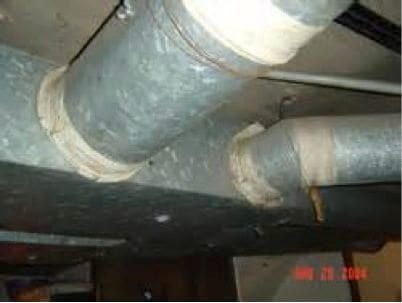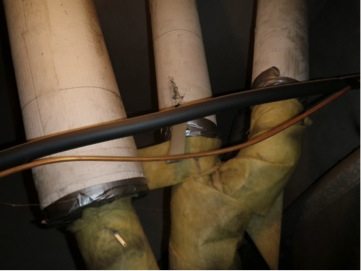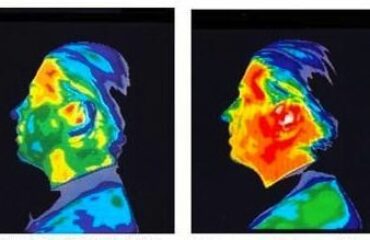Spring – The Perfect Season for an Environmental Building Inspection

Spring – The Perfect Season for an Environmental Building Inspection
Since relocating to the Bay Area, I have to say that I miss the full four seasons of Oregon. I don’t really miss the hard deep freeze of winters, nor the asphalt-bubbling heat waves of late July, but I do miss watching the ground awaken in an explosion of rich verdant greens and the rainbow of flowers and blooms. As always, the greens of spring slowly relent to the browns of hot summer. Next, the changing colors of leaves are accompanied by a crisp chill morning air to remind us that winter is around the corner. An environmental building inspection will prepare you for home and heating repairs you need to make before next winter rolls around.
Seasons help to mete out the cadence of time.
Every spring, as the previously dormant grass awakens with a vengeance, I regain my familiarity with the lawn mower, string trimmer, and other tools with long handles on them. I’ll start to plan projects around the house, such as decks, stairs, planter boxes, maybe a new concrete walkway and a pergola. Maybe a fish pond and a waterfall? Before you know it, the house is playing second string to the yard. I’m not sure that’s always a good thing. Our faithful homes require attention and regular maintenance too. They’ve worked hard all winter and it may be time for an environmental building inspection to be sure everything is in tip-top shape.
Home is where the hearth is.
Spring is the time to check the major systems of the house while we have plenty of time to arrange for repairs before the next heating or cooling season happens upon us because it’s not practical to repair your furnace during December. You need the furnace then. It’s not convenient to repair broken ducting if you live in the hotter areas of the region during July. You need the cooling system then. Right now, during the annual “spring cleaning” is the time to look more closely at our homes and make repairs or conduct maintenance. Spring is “home check-up” season.
Inspecting our furnaces and heating ducts during this off-demand period (when we’re not likely to need the furnace) will allow us the extra time to gather bids or options, or to hire-out the work. You have time to weigh your options rather than engage in emergency repairs.
Heating Ducts?

White lagging cloth-asbestos at duct joints
Yes, we know that we have to change our air filters at least every two months (I prefer monthly, depending on the demand placed upon the furnace and the filter ) and we should have an HVAC contractor at least periodically give our furnaces a check-up, but we should also inspect our heating ducts, too? Why? Beyond the obvious reasons of saving energy and reducing our individual carbon footprints, and to help in some small way to be a little lighter on the planet? It’s because heating ducts and exhaust flues can have asbestos ducting tape, lagging and insulation. Some flues are made of asbestos and cement, and we call this “transite”. It’s the very same material that some siding was made from as well as some plumbing pipes. Everything is fine until these asbestos-containing systems begin to deteriorate from neglect or damage. Then, fibers are released into the environment. We all know that’s “bad”. In fact, there is no known “safe” level of asbestos exposure, only “permissible exposure limits.
There can be more than one type of asbestos involved with a heating system, and some of it can be very brittle and will easily cause a release of airborne fibers when disturbed in the slightest. As an Asbestos Consultant, I am quick to point out to the client that it is not illegal to have asbestos in your home, it’s just problematic when it is damaged or being impacted. You don’t have to remove the asbestos but you do have to take care of it the damage for both moral and legal reasons. You can repair and encapsulate (but be careful how you get that done) or you can remove and upgrade your furnace system including new ducts.
The benefit of maintaining an existing system is out-of-pocket expense is much less. Long range expense? Good question. If you upgrade a 30-year-old furnace that has 65% efficiency rating with a new programmable furnace rated at 95% efficiency that distributes conditioned air through leak-free ductwork, you will soon begin to realize a cost savings in fuel and an increase in comfort too. There may be energy programs to assist or help to defray the cost of a new furnace.
Yes, heating ducts and furnace plenums can be wrapped in asbestos, more likely if they’re of a certain “vintage” and have asbestos-containing lagging cloth or

Asbestos over fiberglass insulation
seam sealing cloth. Metal ductwork can be sealed at joints with asbestos wrapping or paper, too. Asbestos elbows and joints are very common in the flue and ducting system of older furnace systems. Over the years, I’ve seen asbestos insulation actually crack at the metal joints of the ductwork due to movement of the ductwork. This happened because of the loss of a support strap that was moved for some unknown reason but never replaced. A lack of maintenance can cause failure of asbestos lagging or duct sealing systems.
Minor Earthquakes can have their toll on these systems too. The flues or “exhaust pipes” of a gas water heater or gas furnace can separate and cause a CO or CO2 build-up in your crawl space or basement, or in your home depending on where your appliances are located. Please inspect your fuel-burning furnace or water heater system after any seismic event and at least every Spring and Fall. If you’re not comfortable with this sort of work, please call a Plumber or an HVAC Contractor to look at these systems for you. Healthy Building Science will cover these items in our Building Biology environmental building inspection and can recommend what work should be done if we find any notable conditions.
Please don’t forget to consider the “building envelope” too, when you inspect your home. The envelope basically includes the walls, floors and roofing systems of your home. To inspect your “building envelope” start at your roof. In as safe a manner as possible, look for lose or missing roofing tile or shingles. Replace those missing roofing shingles as soon as possible. Please look at the “through roof penetrations”. These are usually pipes that direct sewer gasses out of the house, or maybe a flue pipe from the water heater. Ensure that they’re not leaking water (which you can confirm from inside the attic space because signs of water will be evident on the back side of the roofing panels)
Water from your gutters can cause considerable problems over time to your foundation. Spring is the perfect season to plan on installing a French Drain or to run downspout drain lines in-ground that will soon be much harder as the summer heat continues to remove what moisture there may be from the soil that surrounds your house. Even though this is a very dry year, International Building Code still calls for a slope leading away from your house, and that there should be at least 8 inches of clear air between the bottom of your siding and your flower beds against the house’s foundation. This is all meant to keep your siding from being rotted by water and dirt contact. Keeping your wood siding or wood framing from contacting the soil will enhance the service life of the siding and will be less-inviting to termites, too.
Exterior surfaces of your walls should be looked at regularly too. Look for open seams between siding or stucco wall surfacing and the side of your doors and windows. There may be separations between window and wall that have developed over time, and which now may become an entry point for insects, water or both. Look for signs of water penetration or paint “bubbles”. These can be associated with mold infestations in our more wet years. Caulk and seal cracks with a clear pliable sealant. Look at the general condition of your home or buildings’ paint: If it’s flaking and peeling, it’s time to do something. We at HBS can test your paint, soil/play area, water, and household dust, too. We can recommend management strategies for you. You simply do not want to scrape paint and let the chips fall where they may. Simply put, we don’t want our children to be exposed to lead or asbestos. In any amount. As a general rule, subject to a few quid pro-quos, if you live in a pre-1978 house or building, you may be living with asbestos and lead. Healthy Building Science can help you find out and then advise you accordingly through an environmental building inspection. Just give us a call. Especially if you are planning on a remodel or renovation of your pre-1978 home.
Look before you leap.
If you plan on remodeling your home, we very strongly encourage you to have your existing building materials tested for asbestos and lead before the demolition and very early in the planning process. The earlier you have the information a home inspection can provide, the more you can use that information to best effect. Knowledge, they say….is power. Power to make informed decisions.
We at Healthy Building Science look forward to helping you protect your home and health. Please contact us if you have any questions and Happy Spring!
Healthy Building Science is an environmental consulting firm which provides environmental testing services for commercial, residential, multi-family, buildings, offices, industrial and manufacturing workplaces, hospitals and medical facilities, and single-family homes in the greater San Francisco Bay Area and all of Northern California.



